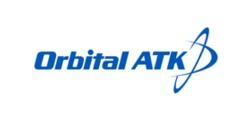Sun, Nov 05, 2017
Test Marks First Of Its Kind For 3-D Printed Motor Components
Orbital ATK has successfully completed a series of static test firings of a prototype tactical solid rocket motor built with critical metal components fabricated by additive manufacturing, commonly known as 3-D printing. These tests marked the first industry demonstration of a 3-D printed complex rocket nozzle and closure assembly in a tactical class rocket motor.

The motor was developed in partnership with the U.S. Army Aviation and Missile Research, Development and Engineering Center (AMRDEC) at Redstone Arsenal, Alabama. It incorporates leading-edge materials technologies designed to improve the performance and safety of a next generation anti-tank missile system. The prototype boost motors featured a high strength graphite epoxy composite case, a reduced sensitivity minimum signature rocket propellant, and 3-D printed components. Assembly and testing of the prototype motors was conducted at Orbital ATK’s Tactical Propulsion and Ordnance facility in Rocket Center, WV.
The test firings successfully validated boost motor and component performance across the full operational temperature range from -26 degrees to +145 degrees Fahrenheit, closely matching pre-test predictions and meeting all test objectives. The 3-D printed single piece high strength steel rocket nozzle and closure structure is expected to improve system affordability by significantly reducing parts count and manufacturing complexity of the current fielded system. In addition, the perforated rocket motor igniter housing and nozzle weatherseal used in the prototype tests were also additively manufactured.
“Orbital ATK has been very successful in taking additive manufacturing out of the academic world and incorporating it into our industrial design and operations,” said Pat Nolan, Vice President and General Manager for Orbital ATK’s Missile Products Division, part of the Defense Systems Group. “Our goal is not just to create industry firsts, but to create practical, reliable solutions that increase our products’ effectiveness while reducing the time it takes to get them into the field.”
As part of the Army’s Missile Science and Technology Enterprise objectives, Orbital ATK and AMRDEC developed the prototype motor to demonstrate and mature new and emerging materials technologies to enhance system effectiveness and achieve insensitive munitions compliance for next generation weapons that will protect soldiers, troops, civilians, and assets from greater threats in all conditions. Orbital ATK expects to continue this work for the next five years under the recently awarded Rocket Propulsion Technology II research and development contract.
(Source: Orbital ATK news release. Image provided)
More News
A Puff Of Smoke Came Out From The Top Of The Engine Cowling Followed By A Total Loss Of Engine Power On May 9, 2025, about 1020 mountain daylight time, an experimental amateur-buil>[...]
From 2022 (YouTube Edition): Jenny, I’ve Got Your Number... Among the magnificent antique aircraft on display at EAA’s AirVenture 2022 was a 1918 Curtiss Jenny painstak>[...]
Very High Frequency (VHF) The frequency band between 30 and 300 MHz. Portions of this band, 108 to 118 MHz, are used for certain NAVAIDs; 118 to 136 MHz are used for civil air/grou>[...]
“From approximately November 2021 through January 2022, Britton-Harr, acting on behalf of AeroVanti, entered into lease-purchase agreements for five Piaggio-manufactured airc>[...]
From 2008 (YouTube Edition): US Fish and Wildlife Service Chooses The Kodiak To Monitor Waterfowl Populations Waterfowl all over North America may soon have to get used to a new ab>[...]
 NTSB Prelim: Lee Aviation LLC JA30 SuperStol
NTSB Prelim: Lee Aviation LLC JA30 SuperStol Classic Aero-TV: Curtiss Jenny Build Wows AirVenture Crowds
Classic Aero-TV: Curtiss Jenny Build Wows AirVenture Crowds ANN's Daily Aero-Term (05.30.25): Very High Frequency (VHF)
ANN's Daily Aero-Term (05.30.25): Very High Frequency (VHF) Aero-News: Quote of the Day (05.30.25)
Aero-News: Quote of the Day (05.30.25) Classic Aero-TV: Quest Kodiak Enhances Migration Monitoring Programs
Classic Aero-TV: Quest Kodiak Enhances Migration Monitoring Programs



